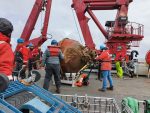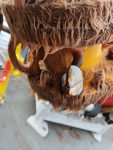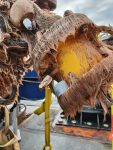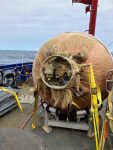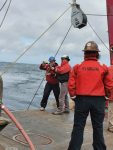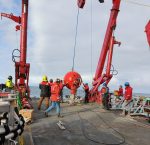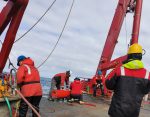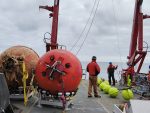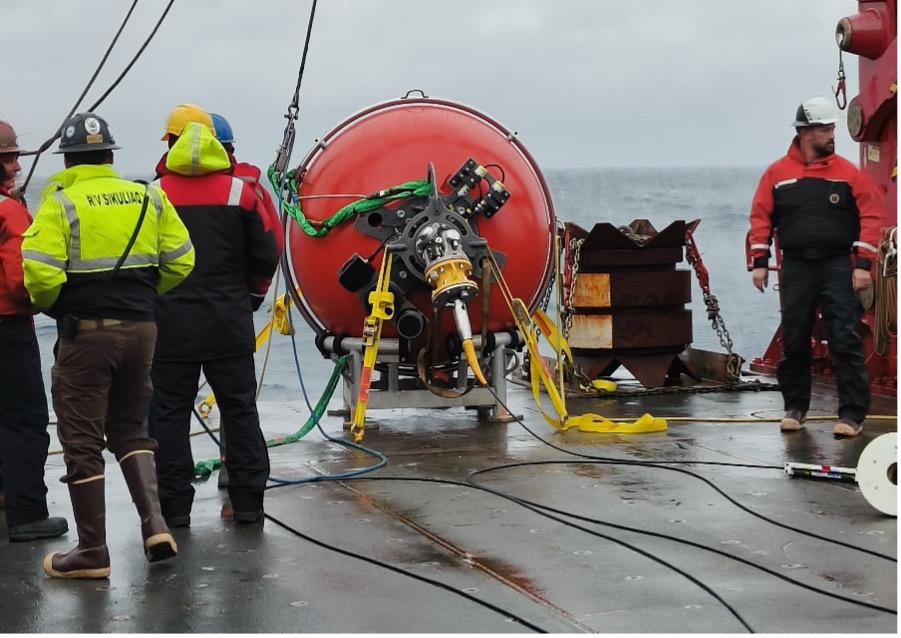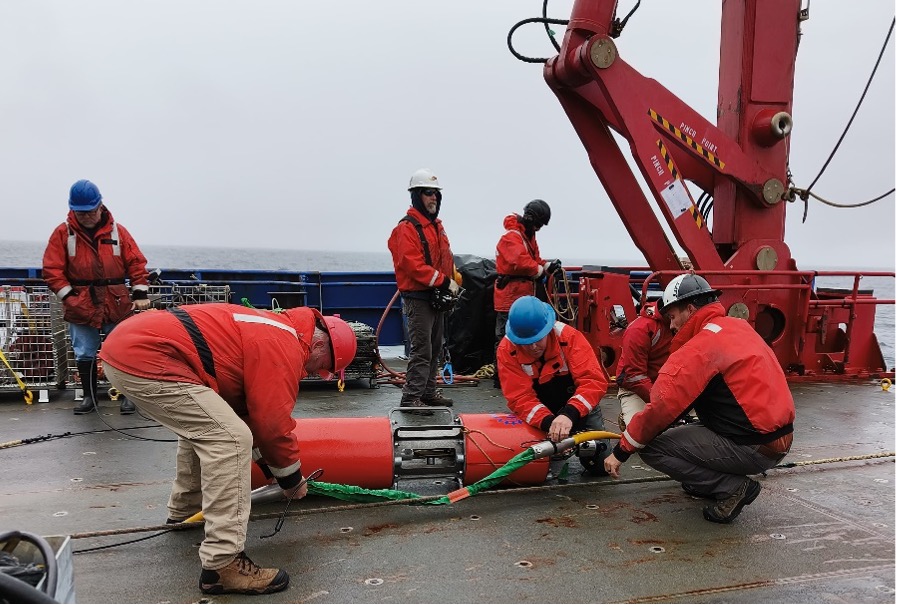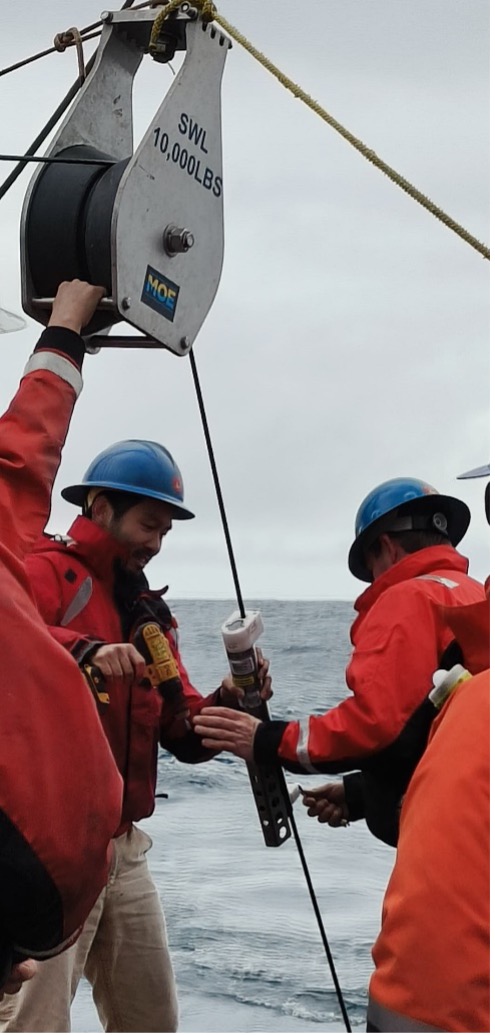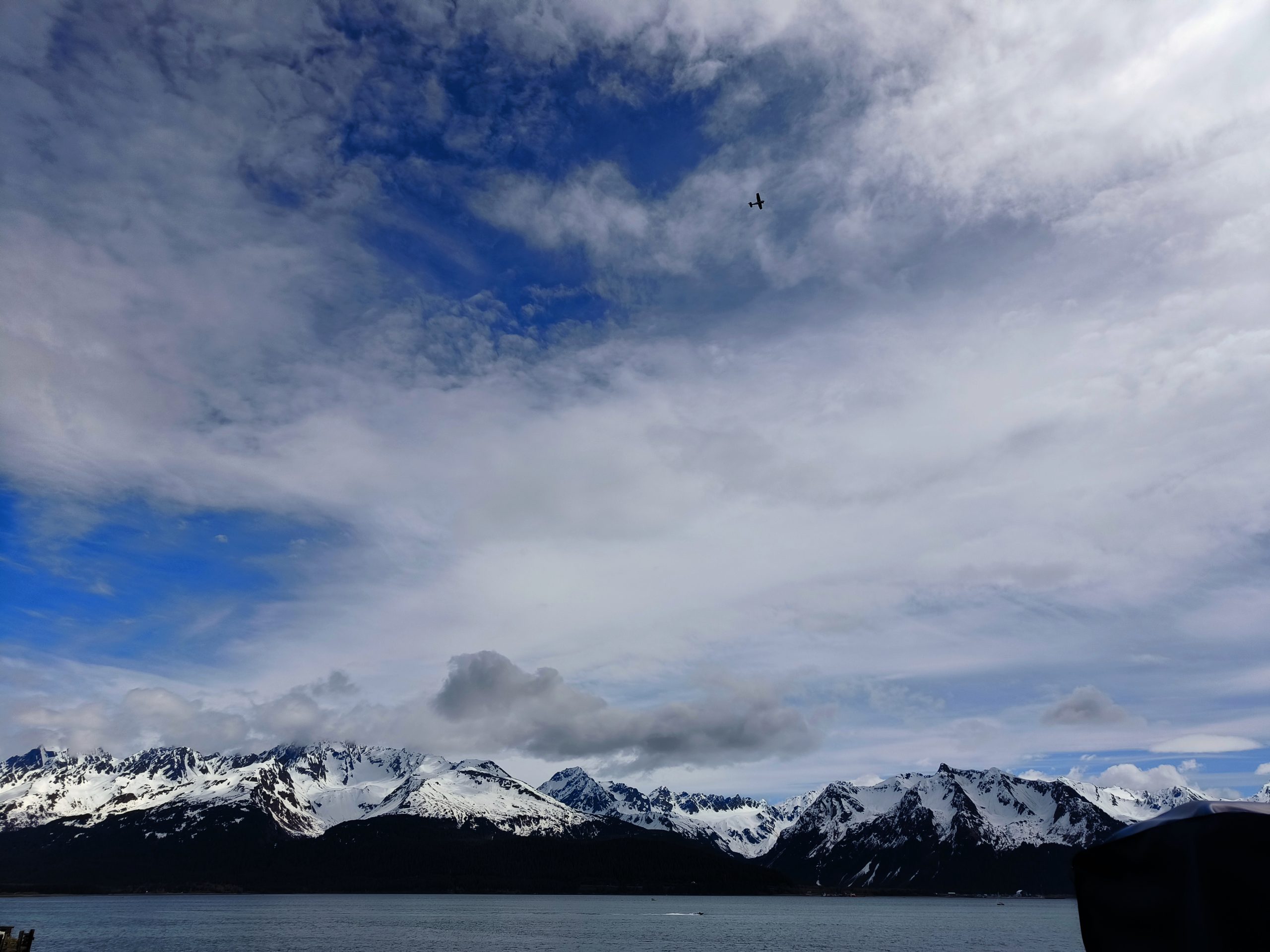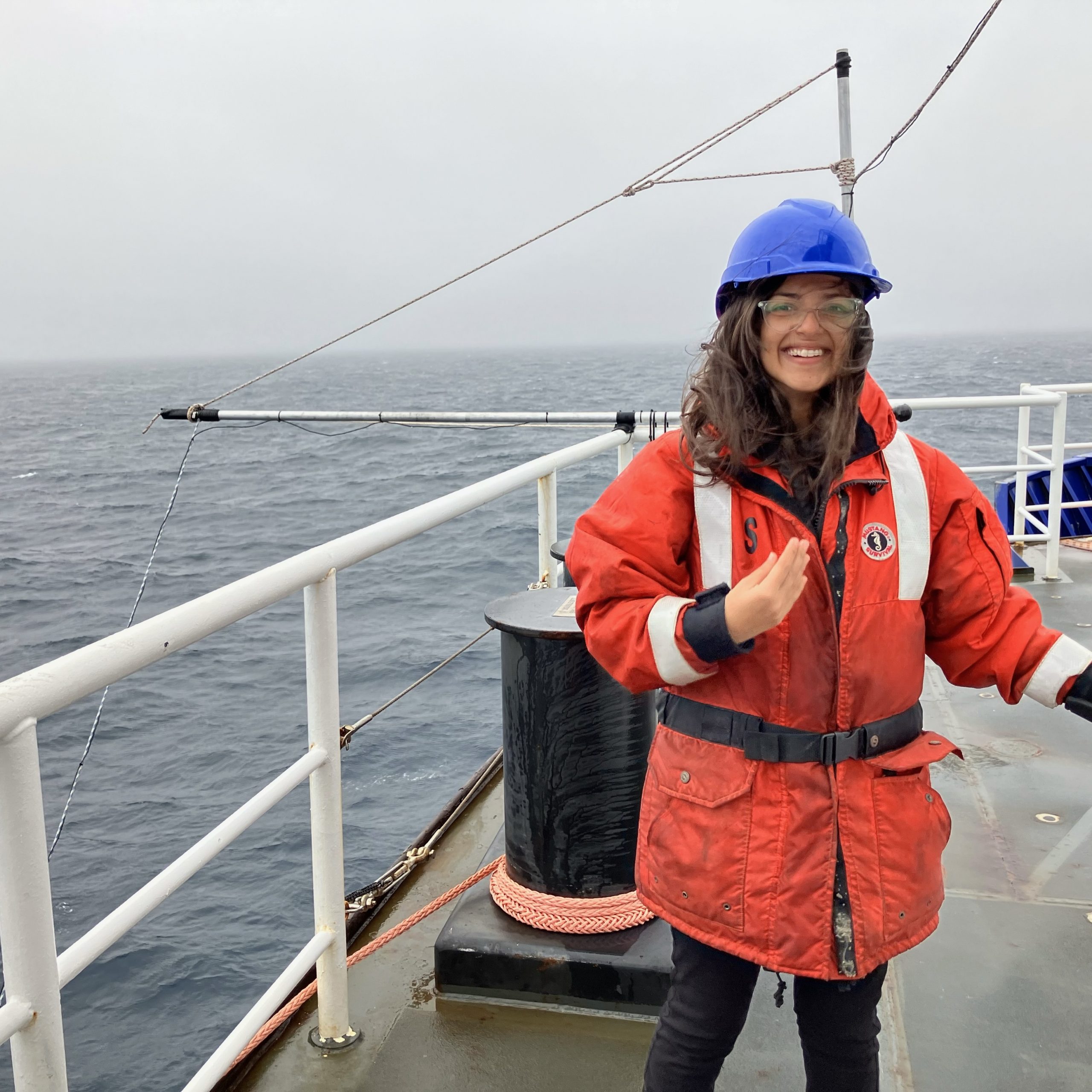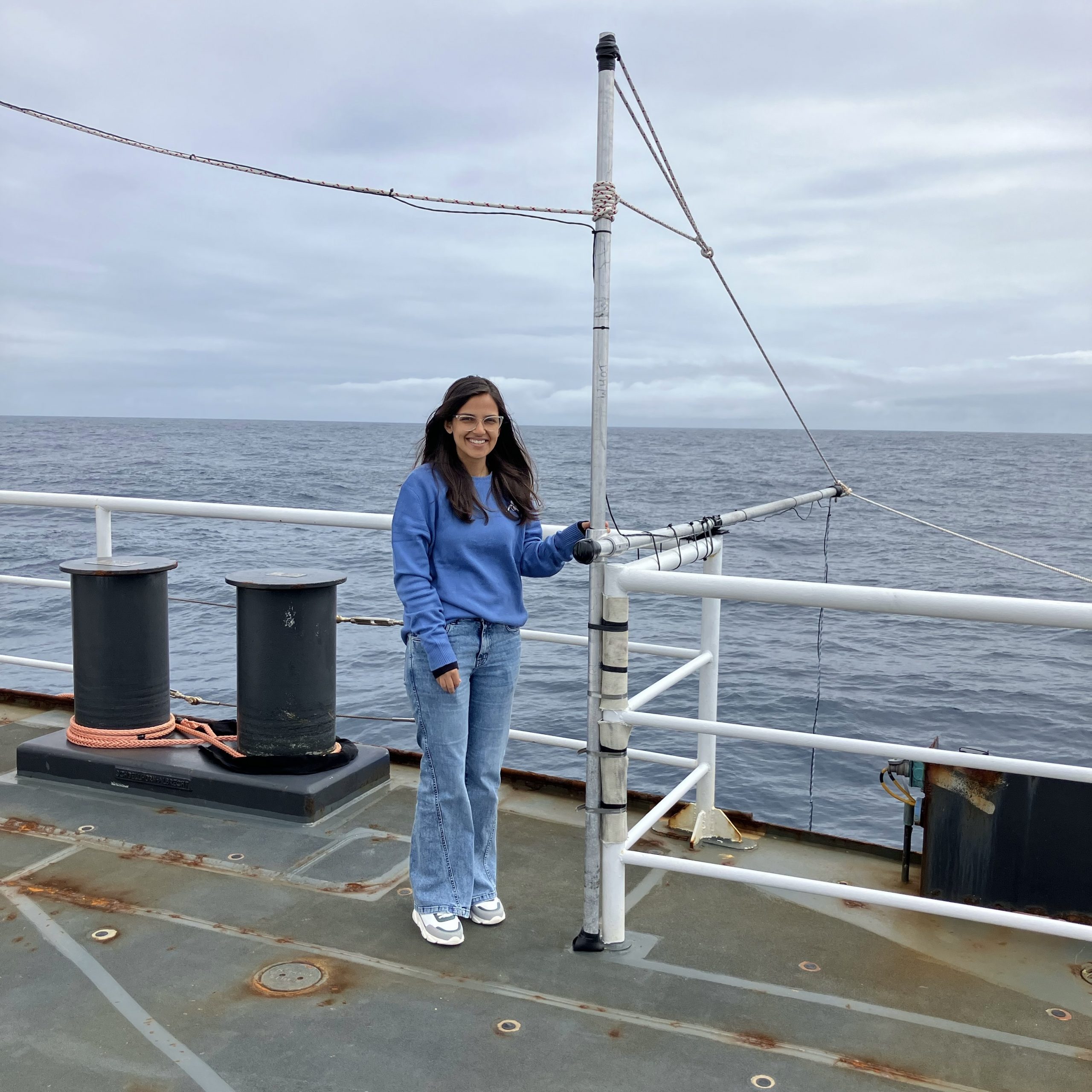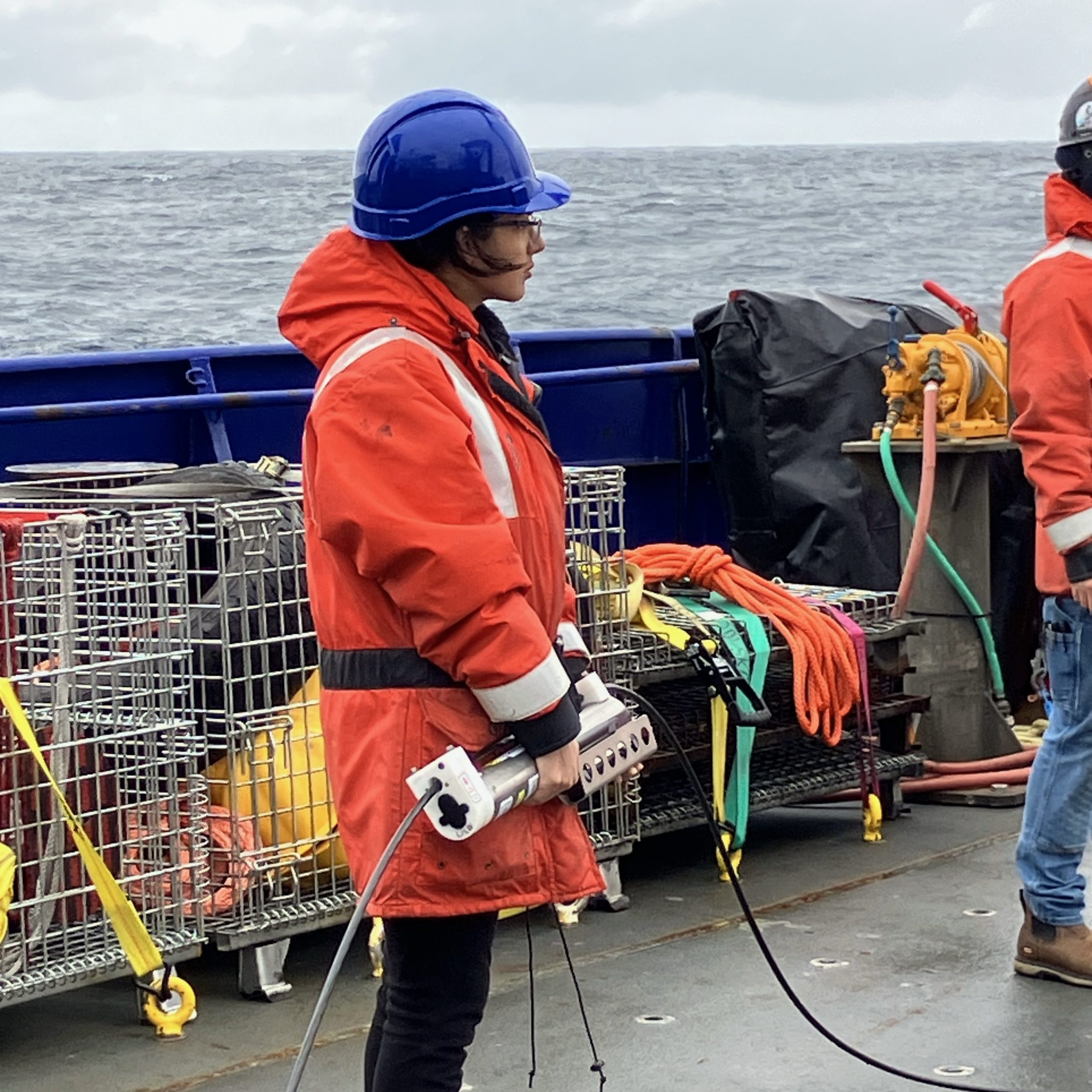POGO Fellow Reports on Shipboard Training
Aditi Sharma, a PhD candidate at the National Institute of Oceanography India, was selected from more than 80 applicants for a shipboard training fellowship sponsored by the Partnership for Observation of the Global Ocean (POGO), WHOI, OOI, and the Nippon Foundation. She was aboard the R/V Sikuliaq for a 17-day expedition to recovery and deploy OOI’s Global Station Papa in the Gulf of Alaska. Jim Edson, Principal Investigator for OOI’s Program Management Office, is also onboard as her advisor. In addition to fantail activities, Edson and she will be working on a project to compare near surface “sea-snake” temperature with an infrared radiometer measuring the sea-surface or skin temperature. This will provide hands-on experience at sea and enhance Aditi’s research experience as she works to complete her PhD when she returns to India. Over the course of the expedition, Aditi shared her experiences, which can be read at the link below.
JUNE 14, 2024 Lots to Report!
Sunrise Surprise
Sunrise has become a rare sight after spending ten days onboard in the Gulf of Alaska.
Tangled Glass Balls
We began retrieving the mooring from the Global Papa 10 Array deployed last year. The most captivating aspect of the operation for me was dealing with the glass balls. These glass balls are often tangled, presenting a fascinating challenge to untangle them, which I found incredibly enjoyable and fun.

Teamwork on Deck
Following the retrieval of the Global Papa array moorings, the team commenced operations to recover the University of Washington wave rider mooring.

Ocean Wizards or Inflatable Tube-man
The rope connected to the mooring was covered with organisms, creating a mesmerizing, almost wizard-like appearance. Dr. Jim Edson compared these organisms to inflatable tube-man at used-car lots, a comparison I found amusing and wholeheartedly agreed with.
The mooring rope bio-colonized by organisms.
Winch Adventure
Deck Operation Lead Jim Ryder offered me the opportunity to learn how to operate the winch, which I found exhilarating despite the cold weather. Fueled with happiness, my hands worked efficiently as I operated the winch barehanded. Despite his offers for a break, I was too excited to pause, deeply grateful to the team for their guidance and teachings during my learning experience.
Winch operation following instructions from Deck Operations Lead Jim Ryder.
CTD operations
In addition to deploying moorings and gliders, we performed CTD casts near the deployment locations to gather samples at specific depths using a 24-bottle rosette of Niskin samplers. The samples were collected for analysis of Dissolved Oxygen (DO), Dissolved Inorganic Carbon (DIC), nutrients and conductivity by salt analysis. Apart from sensors for conductivity, temperature, and depth, CTD was equipped with additional sensors for dissolved oxygen, chlorophyll fluorometer, transmissometer, and PAR.
DIC samples were treated with mercuric chloride for preservation prior to storage. Nutrient samples underwent filtration before being stored in the deep freezer, while Dissolved Oxygen samples were analyzed onboard.
Sample collection using 24-bottle rosette of Niskin samplers via the wet wall.
Spooky dangling figure
As I was doing my laundry after a day’s work, my attention was drawn to the mannequin dressed in safety gear. Ironically, for a moment I didn’t feel safe at all since it actually freaked me out. Well, for a little while.
Spectacular Sunset
JUNE 11, 2024 The Giant Hairy Bearded Man
Recovery operations were set to begin once the deployment operations were successfully completed and the decks cleared. A little time was also allotted between the deployment of new and recovery of the old to provide overlapping data to intercalibrate the moored instruments. The recovery operations brought back the old moorings that had been deployed a year ago. Covered with a dense growth of organisms and encrusted with biofouling, with many goose barnacles, the old moorings took on an almost anthropomorphic appearance, resembling a “Giant Hairy Bearded Man.”
Recovering the Synactic sphere while Jim Edson handles the tag lines helping to stabilize the sphere.
- Biofouling around recovered Syntactic sphere with Goose barnacles clinging to the surface.
- Closeup of biofouling.
- And more.
- Sphere secured, needing cleaning.
- James Kuo and Keith Shadle detaching the temperature salinity sensor from the line during recovery of the mooring.
- Recovery of another Syntactic sphere from 500 m depth, with no visible biofouling.
- Recovering the Acoustic Release.
- Recovering the glass balls as the last part of the recovery operations.
With the weather not on our side, we’ve adjusted our plans to make the most of the sunset’s glow. Working into the evening doesn’t feel exhausting with the late sunset, enabling us to make up for lost time during the storm. With the improvised plans, the team has successfully completed tasks up to date. As we move forward, our sights are set on recovering another mooring and glider.
Stay tuned for more exciting updates on our upcoming adventures!
JUNE 1-7, 2024 A Week at Sea: A Journey of Science and Collaboration
Last week we commenced our oceanographic journey, for the deployment of mooring instruments and the acquisition of invaluable data. Below is a firsthand account of our week-long expedition:
Sea-snake (Thermistor) Setup and Calibration
Our endeavors started by setting up and calibrating the equipment, ensuring readiness for deployment. Sea-snake thermistors were checked and calibrated, ensuring accuracy for subsequent data collection.
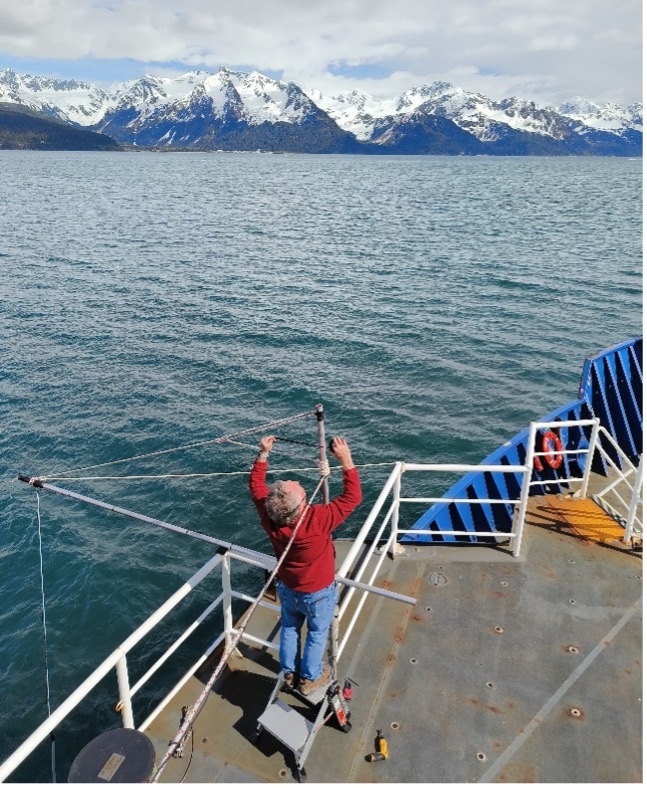
Mooring Deployments
Given the constraints inherent to research vessels, such as cost and limited operational days, relying solely on these vessels for oceanographic data is impractical. Consequently, instruments are deployed into the sea for extended periods, facilitating the collection of data that would otherwise be challenging to obtain, especially during prolonged and stormy weather conditions. These moorings endure harsh marine environments for up to a year or more, continuously collecting and storing vital data.
The process of mooring deployment started with the attachment of instruments to the cable at designated depths, accompanied by the marking of the rope for subsequent attachment of larger instruments. The sequence began with the deployment of the syntactic sphere, followed by the attachment of additional instruments at predetermined intervals along the wire. Finally, the anchor was dropped, and the alignment and buoyancy of the instruments were ensured.
Release of anchor from the deck is captured in the video below.
Glider deployment
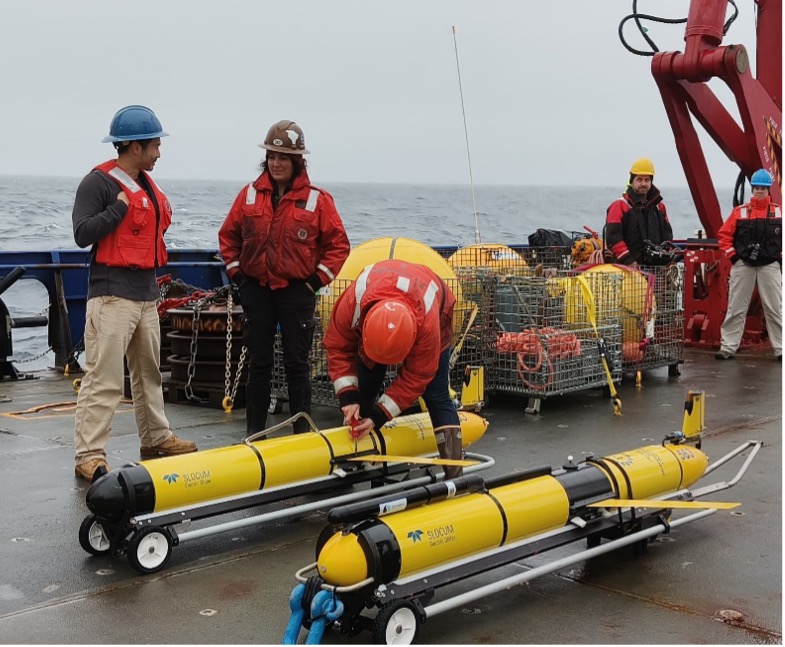
Deployments and Challenges
While our mooring deployment was successful, we faced a few challenges. One of these is to be constantly aware that our equipment needs to be tied down and secure on our moving vessel. For example, I noticed that a row of our wooden spools was becoming loose. Promptly detecting this hazard through back deck camera footage, I alerted Joe Talbert and Jim Edson, who swiftly secured the spool, preventing a potential hazard. I quickly learnt that vigilance and swift action are pivotal in preserving the safety of our team and integrity of our equipment.
Cruising and Celebrating
With all the deployment works, we managed to celebrate two birthdays, including mine, with a delectable cake, infusing this journey with a sprinkle of joy.
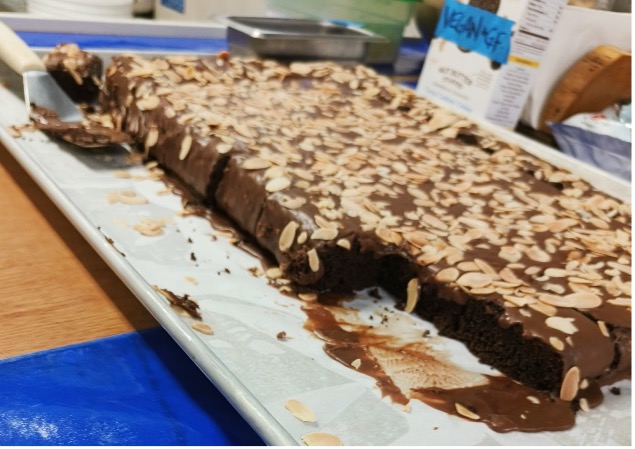
Weathering the Storm
A swiftly escalating storm necessitated a diversion to safer waters. Nonetheless, we seized the opportunity to collect valuable data, conducting comparisons between sea-snake readings and temperature sensors to calibrate the IR temperature sensor, crucial for measuring sea surface temperatures.
Chilly Weather and Hot Chocolate
Following successful mooring deployments and CTD casts, we find ourselves back on course. Despite the chilly weather, the warmth of hot chocolate and hearty meals fills even routine tasks with enjoyment. There’s much to observe and to learn from our team of experts.
Stay tuned for further updates.
MAY 29, 2024 From a Small Town to the Vast Ocean
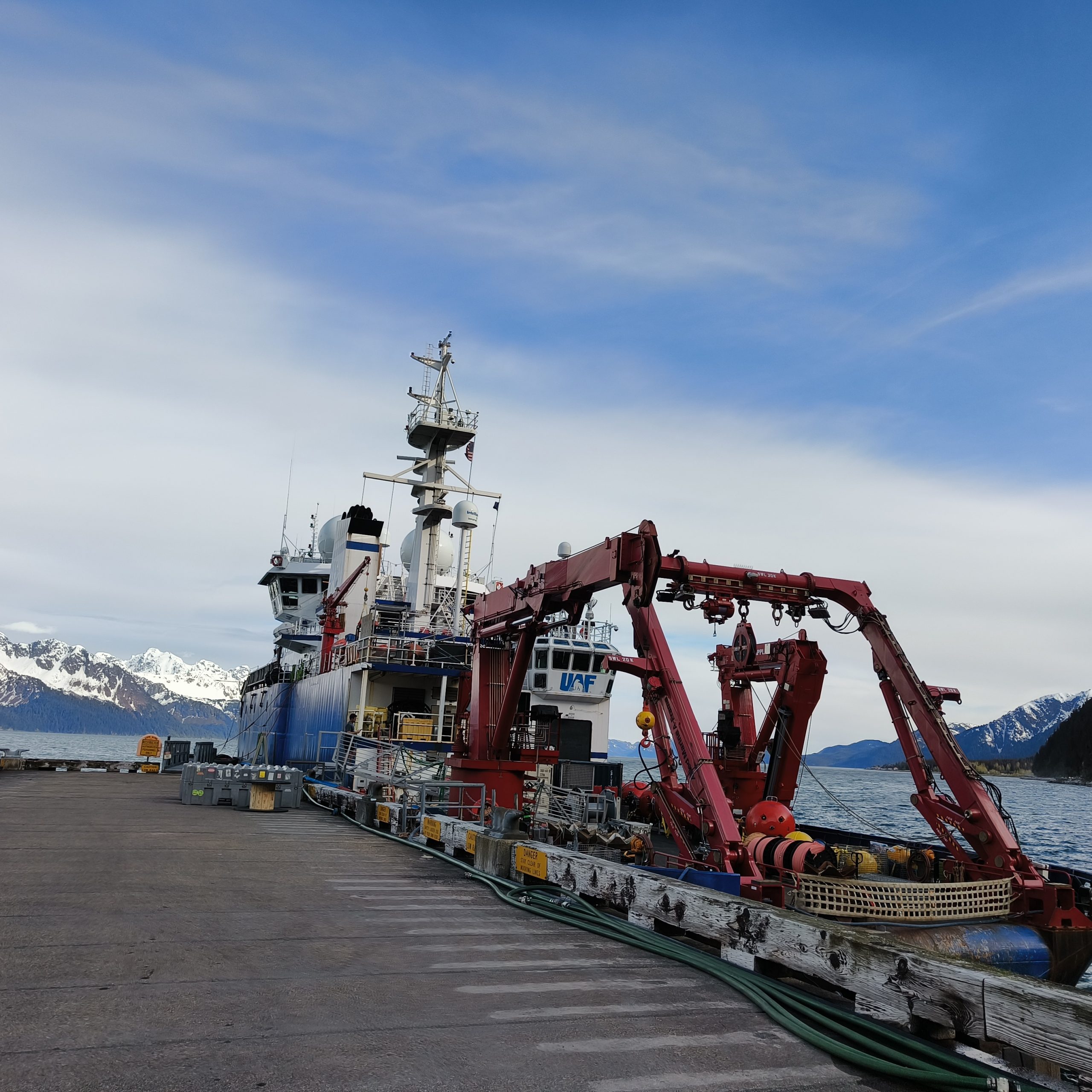
Born in a small Indian town, my journey with the ocean began unexpectedly. Joining the National Institute of Oceanography for an internship, I immersed myself in ocean science under the guidance of Dr. Sarma. His mentorship fueled my passion, leading me to embark on a PhD journey. It was during my first cruise that the ocean’s enchantment took hold of me. As in the words of Jacques-Yves Cousteau: “The sea, once it casts its spell, holds one in its net of wonder forever.”
When the opportunity arose to participate in shipboard training in the Gulf of Alaska, I seized it eagerly. The journey from India to Boston was quite long, but the warmth of welcome from Dr. Edson and his family made every mile worth it. Exploring the operational side of oceanography at Ocean Observatories Initiative (OOI) at Woods Hole Oceanographic Institution alongside Dr. Edson and Dr. Carol Anne Clayson was fascinating. And as we journeyed from Boston to Anchorage, Alaska’s landscapes left me awestruck.
Now, aboard the RV Sikuliaq, our mission begins. Setting up the thermistor to start collecting sea surface temperature, we are navigating toward our deployment site. I still pinch myself to believe I’m living my dream. Talking about dreams, the endless daylight here makes sleep tricky, but the sight of the Alaskan mountains and the ocean under the midnight sun is worth watching. I am excited to enjoy this voyage while gaining invaluable knowledge from the experts in the field.








